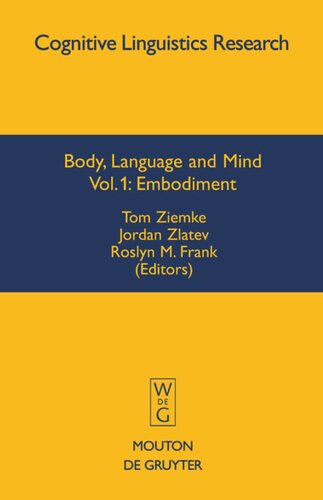

Most ebook files are in PDF format, so you can easily read them using various software such as Foxit Reader or directly on the Google Chrome browser.
Some ebook files are released by publishers in other formats such as .awz, .mobi, .epub, .fb2, etc. You may need to install specific software to read these formats on mobile/PC, such as Calibre.
Please read the tutorial at this link: https://ebookbell.com/faq
We offer FREE conversion to the popular formats you request; however, this may take some time. Therefore, right after payment, please email us, and we will try to provide the service as quickly as possible.
For some exceptional file formats or broken links (if any), please refrain from opening any disputes. Instead, email us first, and we will try to assist within a maximum of 6 hours.
EbookBell Team

4.3
78 reviewsThe first volume of the two-volume set Body, Language and Mind focuses on the concept of embodiment, understood in most general terms as "the bodily basis of phenomena such as meaning, mind, cognition and language". The volume offers a representative, multi- and interdisciplinary state-of-the-art collection of papers on embodiment and brings together a large variety of different perspectives, from cognitive linguistics, cognitive science, philosophy, psychology, semiotics and artificial intelligence.
Being envisioned as a reader of sorts in theoretical and empirical research on embodiment, the book revolves around several core issues that have been addressed previously, to a large degree independently, in various disciplines. In particular the volume illustrates the diversity of notions of embodiment that has arisen in various disciplines over the last twenty years, and addresses the question how these different interpretations relate to each other, i.e. are they different aspects of or different perspectives on the same phenomena, or do they actually contradict each other? For this purpose, several aspects of cognition and language, such as phenomenal experience, perception, action, conceptualization, communication, meaning creation, social interaction and culture, are illuminated from the perspective of different theories of embodiment.
The contributions are integrated through cross-connections between individual authors’ papers and through an introductory essay that identifies the different strands of research, the central issues that they share, and the synergies that can be gained from addressing embodiment from an interdisciplinary perspective.